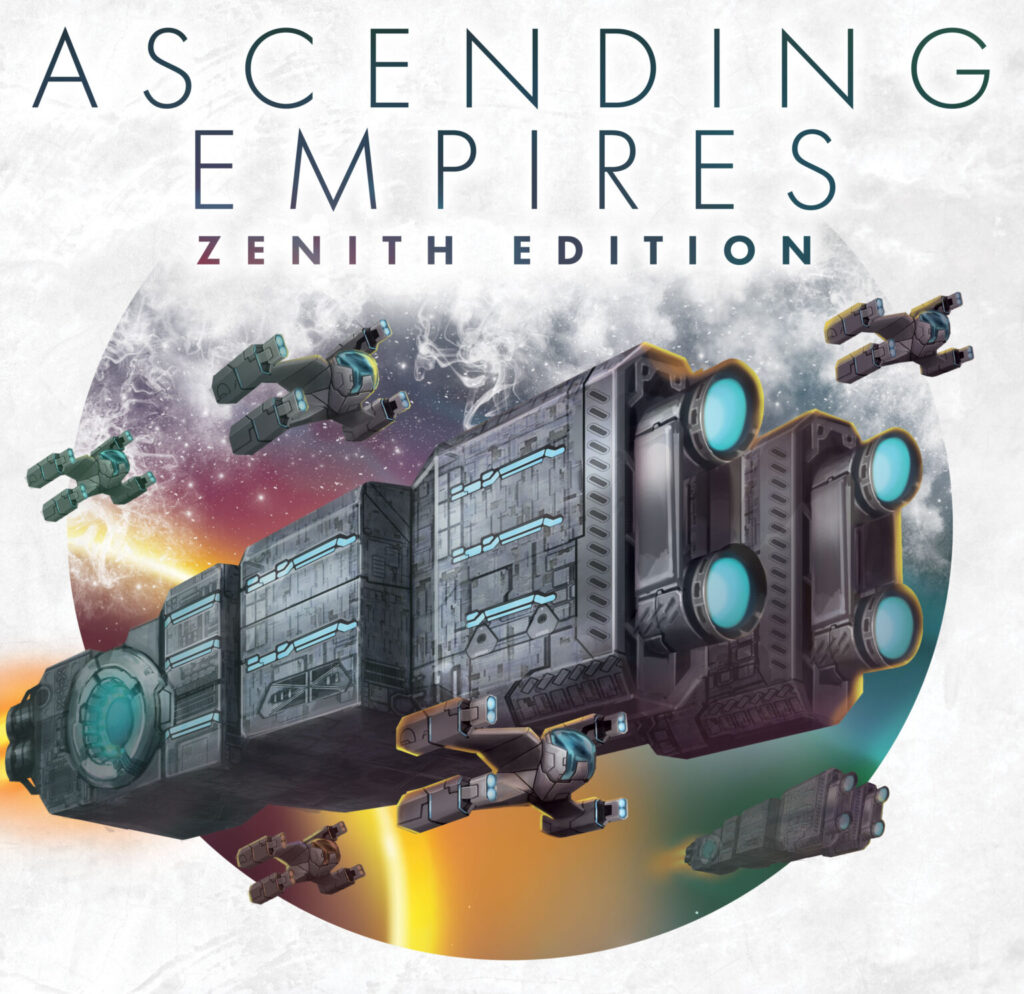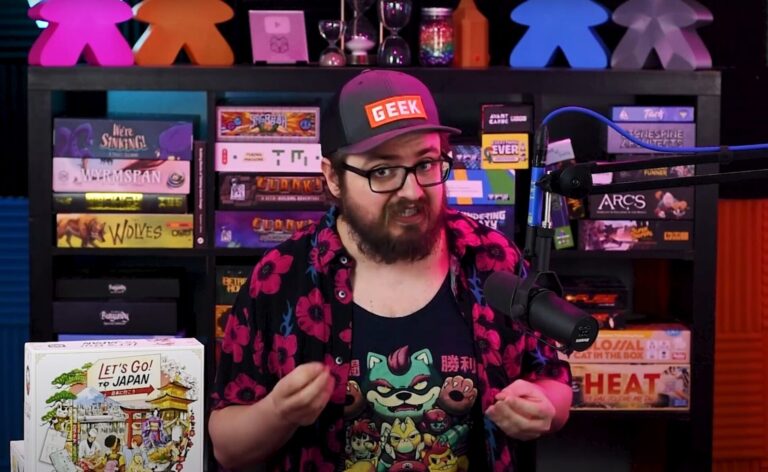
After 25 years in the board game industry, Z Man and Play to Z founder Zev Shlasinger just ran his first crowdfunding campaign. Here’s what he learned
Few people in the modern board game industry can boast a career as long and storied as Zev Shlasinger. After launching Z-Man Games 25 years ago, he found huge success bringing games such as Agricola to the US market – as well as signing one of the biggest board games of all time in 2008’s Pandemic. After leaving his seven-year role as director of board games at Wizkids last June, Shlasinger wasted no time launching a new publishing house, Play to Z Games, with support from a string of industry veterans including Stronghold Games founder Stephen Buonocore and TableTop Games Designers Association co-founder Geoff Engelstein. The company launched its first offering, a reworking of Z Man’s 2011 space ship flicking game Ascending Empires, onto Kickstarter at the end of February – marking the first time Shlasinger had dipped his toes into crowdfunding. He tells BoardGameWire how he approached the campaign, lessons learned and what he plans to do next.
When I started in this business back in 1999 there was no Kickstarter. Nothing like it at all. Well, maybe some wargame companies were using a preorder system: reach a goal of units preordered and they would print the game. But if it wasn’t happening then it would soon after. In fact, I did a preorder for a game back in 2007. But I’ll come back to that.
If you would have told me the idea of Kickstarter, paying now for a game that you would not see for a year or more, for a game you didn’t even play, from a company you don’t even know, for more money that was normally spent on a game – I would have laughed the idea away. (Same way I laughed at board game furniture – boy don’t come to for advice on what to invest in!)
You see, back then when I started, $40 was the price point that people started thinking hard about the worth of purchasing a game or not. Soon that threshold became $50, and much later $60. So, to think that customers would pay far more than that on a game they didn’t really know about, from an unknown publisher, for a game not delivering…. you get the idea. But here we are in 2024 and crowdfunding has become the norm. And I have just finished my first campaign for Ascending Empires: Zenith Edition.
Why did I go with crowdfunding?
After years of running Z-Man Games, then working with Wizkids, now I have ventured out with a new company, Play to Z. I, and my friends and investors, believed that crowdfunding offered the marketing power to not only expose my game to customers, but also alert them to my new company. OK, the decision was made – do I do this myself?
I wasn’t (and still am not) ready to run my own campaign. I know from talking to people that it is a lot of work. As I’m solely running the day-to-day operations of Play to Z, my time and energy is better spent taking pitches to sign future games (among other things). But also, this was a new thing for me. Too many things to consider about running a campaign: getting the right video made, running with the right advertising, getting videos and content from reviewers and influencers. Even dealing with a crowdfunding platform and their nuances and peccadillos.

So many things could go wrong: even a good game could flounder due to so many factors. We had to mitigate that risk, so I decided to hire a group that has done a lot of crowdfunding campaigns, Off Duty Ninja. They would handle the creation and running of the campaign. I would be involved as much as possible, by approving where to advertise, who to do videos, providing content, etc. I even answered questions posed by backers when I could. I mean, I sort of did this before…
Was I one of the first to offer crowdfunding?
In 2007, I signed a license for a game called Agricola. I knew it was special, and the hype around it was great. But it was going to retail for $70! A Euro for $70? Unheard of! I was too shy to risk doing the game without knowing how many people actually wanted this game AND were willing to cough up $70. So I did a preorder with a 1,500 unit threshold. I also created a stretch goal – sort of. I offered an upgrade of the animal cubes to animeeples – yes animal-shaped meeples. It did not take long for me to hit the 1500 unit threshold and the game came out in 2008.
Why Kickstarter?
I talked with many people, and on the advice of Off Duty Ninja, we thought using Kickstarter for our first project was the way to go. It was the first, the biggest, the most well-known, and would offer the most exposure.
So how did the campaign go?
It was interesting to see how the campaign progressed. The flurry of activity in the first two days was amazing. We funded within the first 3 hours or so. Yay! Then backers came in drips and drabs. Sometimes a tiny spike, maybe because of a new update, like a video drop, or information about the game, but a lot of very small increases throughout the campaign.
We had a big jump near the end of the campaign due to a tweet from some friends. And then the last 72 hours saw truly big jumps. I did not expect that much activity toward the end. It is hard to say what drove those backers. We dropped several videos during the campaign. We advertised on Facebook and other places. We did a last minute (48 hours left) BGG ad spree. We even did an add-on – totally unexpected, but one that will yield some extra revenue. This was at the behest of the backers, and I think they appreciated it. It probably made some people back the game while on the fence previously.
All the advertising was effective to some degree – some better than most. I do not have the stats. I just remember Facebook mainly, though I’m sure there was another place. BGG came at the last 48 hours. That particular campaign did not pay for itself BUT we got many people from BGG to order – I guess from other mentions on that site. While it is hard to track all the advertising, overall I felt that was a good use of money.

Off Duty Ninja did a great job for us. While I participated in approvals, gave ideas, answered some comments, they helped set up the campaign page, hired the videographers, set up the videos, and livestreams, handled the advertising, etc. Their help lifted a lot of the burden of working with a new form of media.
Did I really sell that many copies?
One stat to look at was the number of backers of the actual product. It was smaller than the actual number of total backers. This I figured out were those that backed for a $1. Those that just wanted to wait, to get information, to be swayed, to hold their place in line so to speak. I appreciate their backing whether they buy the game or not (as of this writing we have not opened the pledge manager so some of those backers might decide to buy the game). Fingers crossed! But it is an interesting stat to contemplate. Could I have done more to sway them to back? Or is that just part of the crowdfunding process? I’m thinking the latter but with one crowdfunding campaign under my belt I cannot tell).
Were there lessons learned?
I am very happy we did a short campaign. I don’t think I would do a long campaign – too much downtime in them idle that would need to be filled with something. I think you get people in the beginning who are interested then those at the end who find out about the game and decide not to miss out on the opportunity. I think I would do fewer videos and put that money towards advertising. I feel that the videos might be too duplicative. Yes, each creator has their audience, but I think there is enough of an overlap that it doesn’t completely justify doing that many videos. I could be wrong, and I would experiment with the next one and see.
Being able to pivot during a campaign is important. As mentioned, I included an add-on I had not considered due to backers asking for it. Not every request may be possible, but I think can be considered at least (but don’t let it derail your plans). I didn’t build the audience as much as I should have. Or certainly nowhere near as much as people have expressed as being vital to the success of a campaign.
I let the game’s previous history and ratings sell itself as well as using my contacts within the industry and the goodwill of fans from my previous incarnations to help sustain the campaign. That’s not to say I didn’t demonstrate the game – I showed it off at several shows. This campaign initially offered no extras – just a reduction of price. I think having a few more things available will help get backers to back. I wouldn’t go crazy with stretch goals and add-ons, but offering something would be appealing (and as mentioned above we did offer an add-on).
In the end the campaign worked so kudos to the hardworking team that fostered its success with knowledge of the media and a willingness to get out there and show off the game.
What’s next?
Taking what I learned from this campaign, I will apply and experiment with ideas in the next campaign, scheduled for July 23 (for a game called 23 Knives). The big thing is trying to get the game out there earlier into the minds and hands of people. We did a fun teaser on February 29, and are currently offering a special promo card if you sign up on my website and you end up backing the game. We’ll offer the promo card in other ways as well.
The other consideration is making more crowdfunding-worthy items to be had. We’ll be offering more promo cards, some potential upgrades to components, and the like. Again, not go crazy with too many offerings and no exclusives (or not completely exclusive).
Feel free to contact me with any questions and please do check out our games: zev@playtozgames.com





[…] of their work for a while, but I didn’t realize how robust their services were until I saw an article about the recent Kickstarter campaign for Ascending Empires in which Zev said, “I decided to […]
Hi, I submitted a card game on June 25th entitled “KaleiDICEscope.” It’s been almost 8 weeks so I was wondering if you’ve had a chance to review it.
Respectfully,
Mike…
Hi Mike, thanks for your message – I can’t see any emails from you I’m afraid, could you send again to mike@boardgamewire.com please?
Thanks!
Mike